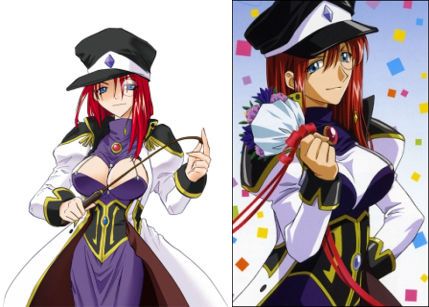Ask John: Does Changing Costume Design Constitute Censorship?

Question:
An issue arose over the comparison in character design between the manga One Piece and Bleach and their anime counterparts. Basically, some of the female characters have risqué outfits showing parts of naked breasts in the manga, while in the anime these characters have their costumes changed. Is this censorship, or the anime crew’s vision of these characters?
Answer:
Japanese television has long been known to be more permissive than American broadcast television, but even the more permissive Japanese broadcast standards aren’t an unrestricted wilderness. In fact, as times have changed and the precision and detail native to broadcast anime has gotten more refined and revealing, today’s broadcast anime isn’t as tolerant of graphic nudity as it was twenty years ago. Japanese television broadcasters do censor anime. Depending on the network considered, the current Japanese television broadcast of High School of the Dead includes censorship ranging from minimal to extensive. Even Japanese premium and cable networks uphold certain standards of decorum. When the first episode of Seikon no Qwaser was initially broadcast earlier this year, even on premium satellite networks the episode was so heavily cut, edited, and censored that the broadcast episode was frequently incomprehensible.
When compared to the extensive censoring applied to broadcast anime including School Days, Rosario to Vampire, Seikon no Qwaser, Girls Bravo, Strike Witches, Toaru Kagaku no Railgun, Dragon Ball Kai, and High School of the Dead, relatively small changes like altering costumes to cover up some cleavage is rather minor censorship. Complete changes to costume from manga to anime may be due to the animation staff realizing that a simplified costume will be easier, faster, and cheaper to animate. However, in a case such as Galaxy Angel’s Forte getting a slightly modified costume that covered her previously exposed cleavage when the show moved from satellite broadcast to terrestrial broadcast can only be perceived as conscious censorship.
Regrettably for viewers that prefer to see anime the way its creators intended for it to be seen, regulations regarding media censorship only extend so far. Japan, like America, has a nationally prescribed freedom of speech and expression, but television networks also have a right to set their own broadcast policies and refuse to air material which they aren’t comfortable airing. With anime becoming increasingly provocative and explicit at a rate faster than widespread public tolerance, broadcast censorship is a commercially necessary and unavoidable compromise.
Add a Comment
You must be logged in to post a comment.


I suppose it’s also used as a deliberate draw for the uncensored home video versions
The “deliberate draw for the uncensored home video versions” can be a double edged sword. They might get extremely poor ratings on a very provocative and explicit show because views might opt to not watch it at all until the home version is released.